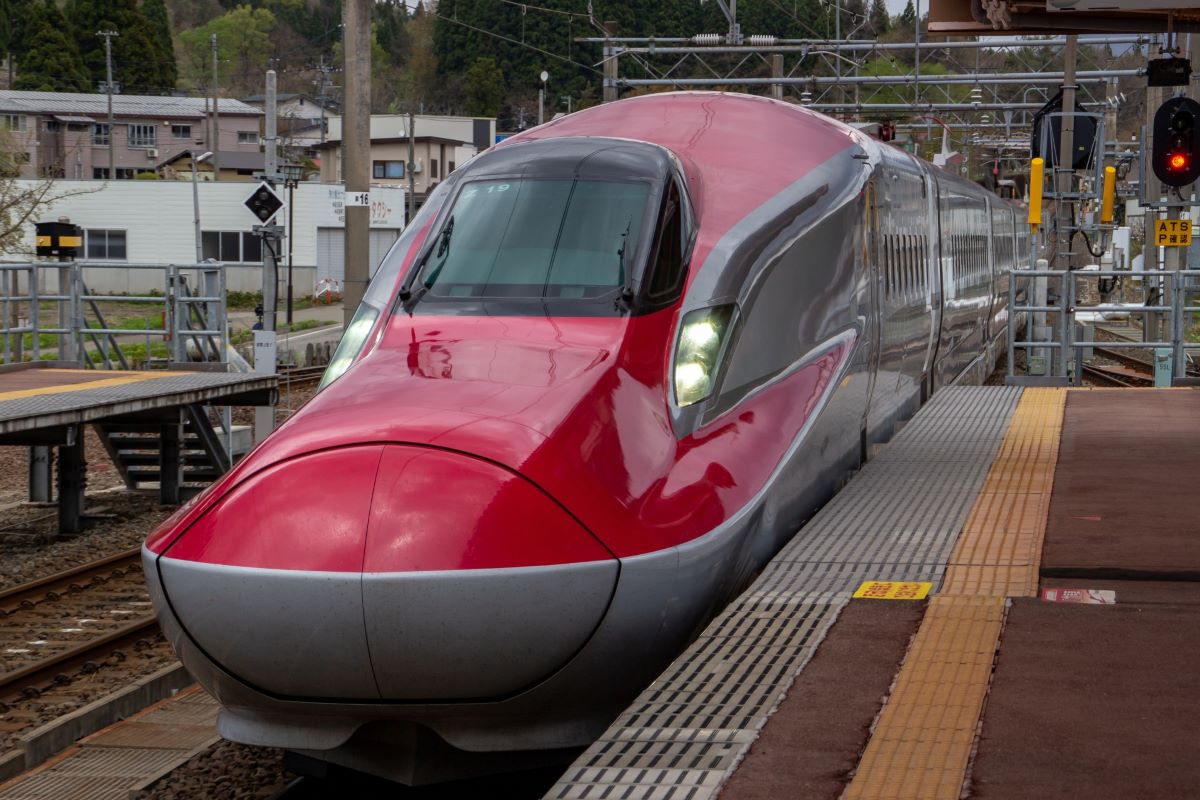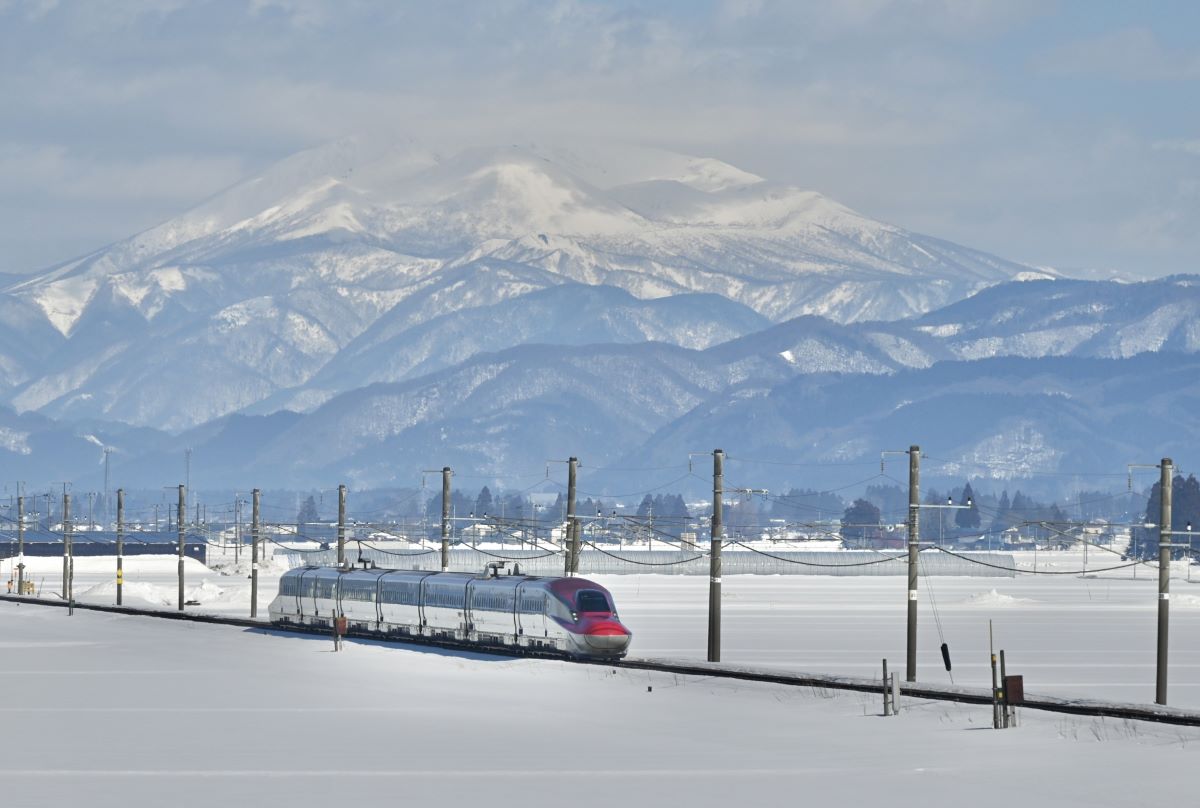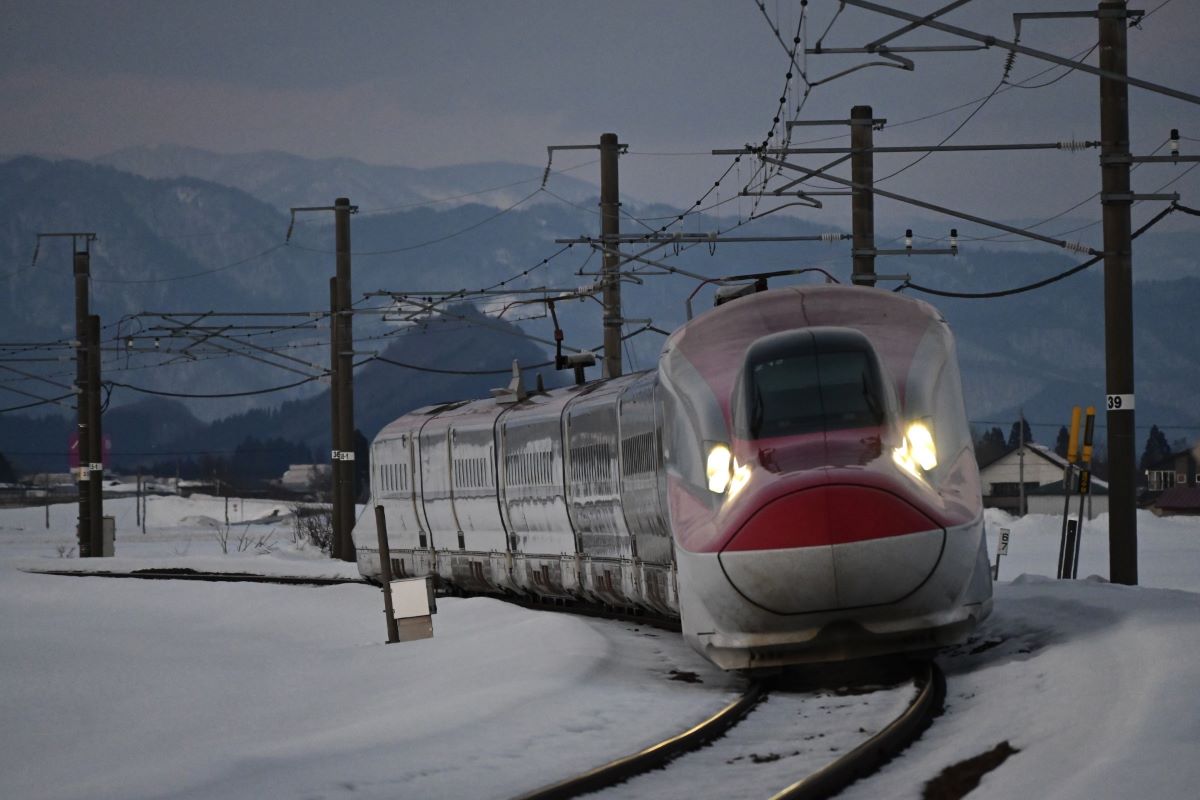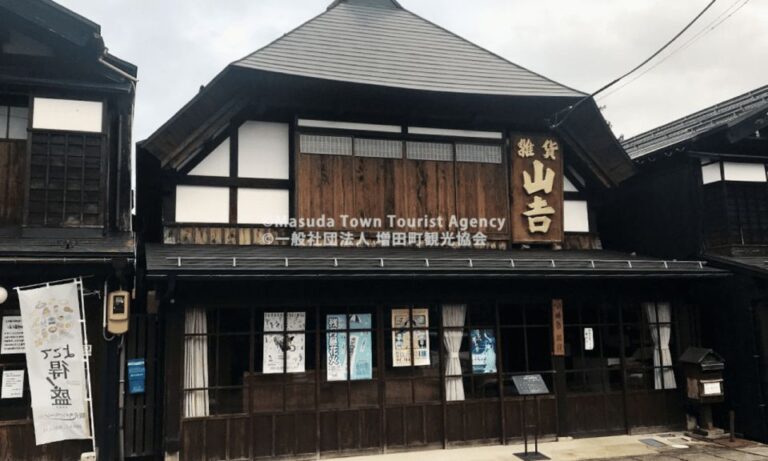The Akita Shinkansen is a high-speed bullet train line in Japan that connects Tokyo with the city of Northern city of Akita. It is a branch of the Tohoku Shinkansen Line that operates on standard gauges, making it a “mini-shinkansen” service. Launched in 1997, the Akita Shinkansen service has become a popular transport option for both locals and travelers visiting the Tohoku region.

The Akita Shinkansen service was launched to improve transportation options in the Tohoku region, which was previously underserved by high-speed train services.
The train service is operated by East Japan Railway Company (JR East) and covers a distance of 675.8 kilometers. It takes approximately 3 hours and 50 minutes to travel from Tokyo to Akita, with stops at various stations along the way.
Route and Stations

The line is operated by East Japan Railway Company (JR East) and is a branch line of the Tohoku Shinkansen with a total length of the line is 675.8 km (419.9 mi).
The Akita Shinkansen’s route starts out at Tokyo Station and runs through the Tohoku Region of Japan, passing through cities like Ueno, Omiya, Sendai, and Morioka, before finally reaching Akita Station in Akita Prefecture. The line has a total of 22 stations, including the two terminal stations in Tokyo and Akita, and is served by the Komachi and Tsubasa trains.
Akita Shinkansen Ticket Costs And Travel Times
Here’s a table of all the stations on the Akita Shinkansen, along with the estimated travel times and costs from Tokyo:
| Station | Estimated Travel Time from Tokyo | Cost (Ordinary Class, One-way) |
|---|---|---|
| Tokyo Station | – | – |
| Omiya Station | 30 minutes | ¥5,200 |
| Sendai Station | 1 hour 30 minutes | ¥11,000 |
| Furukawa Station | 1 hour 45 minutes | ¥11,700 |
| Kurikoma-Kogen Station | 2 hours | ¥12,200 |
| Ichinoseki Station | 2 hours 10 minutes | ¥12,700 |
| Mizusawa-Esashi Station | 2 hours 30 minutes | ¥13,400 |
| Kitakami Station | 2 hours 40 minutes | ¥14,000 |
| Morioka Station | 2 hours 50 minutes | ¥14,800 |
| Shizukuishi Station | 3 hours 10 minutes | ¥15,300 |
| Tazawako Station | 3 hours 25 minutes | ¥15,800 |
| Kakunodate Station | 3 hours 40 minutes | ¥16,300 |
| Omagari Station | 3 hours 50 minutes | ¥16,700 |
| Akita Station | 4 hours 10 minutes | ¥17,200 |
Note that these costs are for ordinary class, one-way tickets, and may vary depending on the time of booking and any ongoing promotions.
Akita Shinkansen Map
Here’s a map of the line along with a few of the attractions along the way

Train Services

The line is served by the Komachi trains, which are formed of 7-car E6 series mini-shinkansen sets coupled with E5 series Hayabusa trains for the portion of the journey.
The Komachi trains are iconic for their distinctive design and comfortable interior. They offer both reserved and non-reserved seating options, with Green Car (first class) and ordinary car (standard class) seating available. The Green Car seats are wider and offer more legroom than ordinary car seats, and passengers can enjoy complimentary drinks and snacks during their journey.

There are frequent services throughout the day, with trains departing every 20-30 minutes during peak hours. The journey from Tokyo to Akita takes approximately 4 hours, with stops at major stations such as Ueno, Omiya, Sendai, and Morioka along the way.
Passengers can purchase tickets for the Akita Shinkansen at JR East ticket offices, online, or using the Suica or Pasmo IC cards. It is recommended to book tickets in advance, especially during peak travel seasons such as holidays and weekends.
Fares and Tickets
Traveling on the Akita Shinkansen requires a valid ticket. There are several options available for purchasing tickets, including online, at ticket machines at train stations, and at ticket counters. It is recommended to purchase tickets in advance to ensure availability and to avoid long lines at the station.
A one-way ticket from Tokyo to Akita on the fastest train, the Komachi, will cost ¥21,900 (approximately $200 USD) for an unreserved seat and ¥22,690 (approximately $207 USD) for a reserved seat.
You can also purchase a Japan Rail Pass, which allows for unlimited travel on JR trains, including the Akita Shinkansen, for a set number of days. The JR East Pass (Tohoku area) is also a great option if you plan to head to the Akita region. It gives unlimited travel for 5 days for ¥19,350 (approximately $177 USD) for adults and ¥9,670 (approximately $88 USD) for children.
For passengers looking to save money, there are also slower, less expensive trains available. The slower trains on the Akita Shinkansen line are called the Komachi and the Tsubasa, and they offer cheaper fares than the faster trains.
History of Akita Shinkansen

The line was built in the 1990s and began operating in 1997. Here is a brief history of the Akita Shinkansen:
- 1993: Construction of the Akita Shinkansen began.
- March 22, 1997: The segment from Morioka to Akita began operating with 5-car E3 series trains.
- 1998: Trains were extended to 6 cars.
- September 16, 2002: The Akita Shinkansen was extended to Tazawako Station.
- March 22, 2014: The E6 series trains replaced the E3 series trains on the Akita Shinkansen line.
- March 26, 2016: The Akita Shinkansen was extended to Akita Airport Station.
The Akita Shinkansen is known as a “mini-Shinkansen” because it uses a narrower gauge track than the standard Shinkansen lines. This allows the line to run on existing tracks, reducing the cost of construction.
Future Developments

The Akita Shinkansen has been in operation for over two decades, and it continues to be a vital mode of transportation for the people of Japan. However, there are plans to improve and expand the Shinkansen network in the coming years. Here are some of the future developments that are expected to take place:
- Celebration of the 25th anniversary of the Akita Shinkansen: The Akita Shinkansen fully opened on March 23, 1997, and celebrated its 25th anniversary in 2022. Celebrations were held to commemorate this milestone.
- Construction of a tunnel for the Yamagata Shinkansen: A grand project to build a 23-kilometer tunnel for the Yamagata Shinkansen is currently underway. This tunnel is expected to reduce travel time between Tokyo and Yamagata by 30 minutes.
- Introduction of the E6 ‘Super Komachi’ services: The R1 set of the Akita Shinkansen made its final run on July 20, 2023, and was replaced by the E6 ‘Super Komachi’ services. These new services have a maximum operating speed of 320 km/h and are expected to provide a smoother and more comfortable ride for passengers.
- Advancement of new developments based on IoT, big data, AI, and other technologies: According to JR East, they are continuously researching and developing ways to improve the safety and stability of the Shinkansen network. They plan to utilize IoT, big data, AI, and other technologies to advance new developments based on four concepts: “achieving greater safety and stability”, “improving comfort and convenience”, “reducing environmental impact”, and “providing new value and services”.
These future developments are expected to make the Akita Shinkansen and the Shinkansen network as a whole even more efficient and convenient for passengers.





